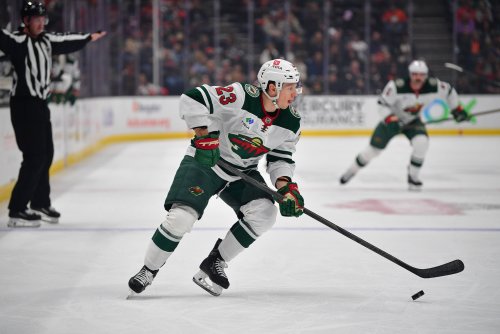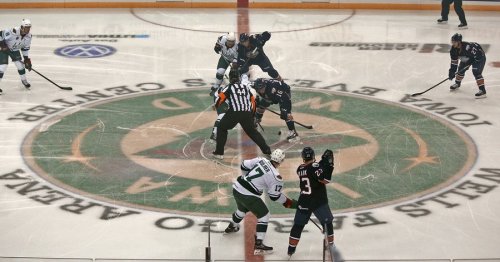
Usage
This chart (courtesy of Some Kind of Ninja) displays all forwards with more than 50 games played this season. The X-axis is their zone starts, the Y-axis is quality of teammates (based on CF%). The color of bubble is positive (blue) or negative (red) CF%Rel- that is, did that player's presence on the ice mean a likelihood of more shots for or against their team. Size of bubble indicates how positive or negative each player's CF%Rel (or Corsi Relative) number was.
This year, Coyle got relatively favorable deployment, both in terms of zone starts, and teammates. Despite this, of all the positive-CF%Rel players, Coyle was the least positive. Even Matt Moulson, who had significantly fewer offensive zone starts (just 50% compared to Coyle's 55) and significantly worse teammates (-8) had a better CF%Rel than Coyle. Now, all this said, Coyle's +3 CF%Rel is far from terrible, and it's important to remember he out-performed Granlund, Cooke, Brodziak, and Fontaine.
In summation: This year, Coyle produced fairly well from a Corsi perspective, while getting favorable zone starts and QoT. Why, then, is Coyle getting flak for underproducing? Part of the answer can be found when we look at this same chart, but for last season.
This is the exact same chart in terms of X-axis (Zone Starts), Y-axis (QoT), bubble color, etc. The only difference is that these are all forwards with more than 30 games played (due to the shortened lockout season).
The first thing to notice is that Coyle had extremely sheltered minutes last year. He had the highest QoT (+3.1), and the most offensive zone starts. Furthermore, Coyle had a higher CF%Rel than everyone on the team except Koivu and Parise. In other words: Last season, Coyle was a possession monster, probably due at least in part to his very high QoT and his very friendly zone starts.
The 2012-13 season was stellar for Coyle and fans likely expected to see similar numbers this past season. We, as a fan base, fell victim to high expectations based on a brilliant performance by Charlie in his first season. Coyle did not, by any means, play poorly in 2013-14, but his performance didn't live up to the year before; almost certainly a result of a longer season with slightly harder usage.
Production
Let's look at Coyle's production, breaking it down by last year, this year, and overall.
Last Season
This Season
This is the exact same chart as above, except for the 2013-14 season rather than 2012-13. Coyle ranks at about the same point on the team- 6th in points at 5v5. His sh% has dropped to 7.4%, which is likely less than his true average. His point-production rate has stayed relatively steady at 1.41 points/60 minutes, though his points per game dropped to .33 PPG.
Between his first two seasons, Coyle’s production has been relatively consistent. Both his P/60 and PPG were almost identical, with the slight drop likely being due to Coyle’s sh% being almost half of what it had been before. Given the consistency, it’s a little surprising that people are underwhelmed with Coyle’s second season compared to his first.
Overall Stats
There are some who, rather than arguing that Coyle has experienced a sophomore slump, say that rather Coyle is simply not producing as much as he should be. Let’s look at Coyle compared to other players whose first season was the lockout-shortened season.
Summation
Looking at Coyle's first two years, it's hard to argue that he has produced poorly. The Minnesota Wild, as an organization, are pretty mediocre at scoring goals. Within that team, however, he has been a good possession player, and his production has been consistent over both seasons of his career. Coyle certainly has some upside; though his numbers didn't improve from his first to his second season, his second season was with a vastly different group of people, and was nearly twice as long; simply sustaining his numbers is a good sign.
Coyle is clearly a capable player. What he will become is anyone's guess, but he has shown consistency, which is great for a young player. He will need to improve to be called great, but it is early enough in his career that he is likely not yet done improving.
Edit: typo: spelling error.
Think you could write a story like this? Hockey Wilderness wants you to develop your voice, find an audience, and we'll pay you to do it. Just fill out this form.









Recommended Comments
There are no comments to display.
Join the conversation
You can post now and register later. If you have an account, sign in now to post with your account.
Note: Your post will require moderator approval before it will be visible.